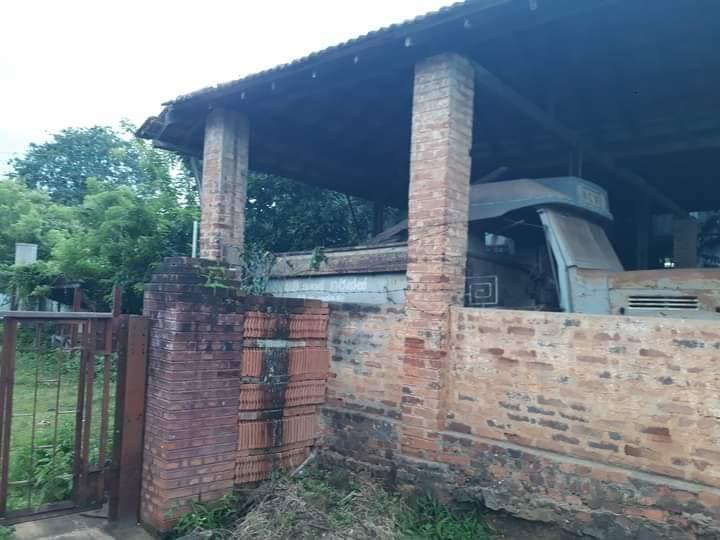Patinayake Vadu Ralahami.....
(This article is being edited)
Born in Pathegama Pasal village near Dickwella Niyam village on November 11, 1893, Don Karolis went to his mother's brother after his education at Wijewantha Patinayake School and mastered carving and carpentry. He was skilled in carpentry almost by instinct and was more skilled than all the carpenters in the area at that time and engaged in making the roofs of the newly built houses. In 1927, he made the roof of Algiriya temple. At that time, the roofs of the temples and the houses of the rich were covered with Sinhala tiles. But the newly built temples and houses of the rich started to be roofed with the flat tiles called Calicut tiles imported from India. Even when he finished the work on the roof of the temple, he did not receive the flat tiles ordered for roofing. It is because of a delay error in the ship. At that time, a wonderful idea came to the mind of the carpenter. In order to save the huge amount of money spent on importing tiles from India, the idea that we can make those tiles in our country entered his mind. At that time, no entrepreneur or engineer in Sri Lanka had thought of this idea
It required a lot of money to get to the top, and it was very risky. After thinking about it for a long time while standing on the ground, I started thinking day and night about the challenge of making country tiles. It is about making them and saving money that flows abroad. Having mastered the art of engraving, he placed a calicut tile on a board, marked it with a pencil, and made a mold to make the tile out of clay. Kiri took a block of clay and removed the stones and dirt from it. He cut a piece of bamboo and put the mouth on it and removed the small stones by writing clay from it. After that, the clay is seasoned well and put into the mold and pressed well to form the tile. It was left to dry and burned. Not satisfied with that. He continued to experiment by making molds again and again. His creative energy and perseverance helped him achieve his goals. He has come to Kirinda after marrying Miss Karalina Ekanayake who belonged to an important family in Kekanadura. He was settled in the land called Bogahawatta located in front of Purvarama Piriven Vihara on Gatmanna road. Satisfied with many experiments, he decided to start the country tile industry in 1926, 27, which no one had even dreamed of. But from the beginning, he had to spend a lot of money and start work with a lot of risk, so he organized the work of starting the industry with Yathiana Velangoda Jayasekara Arthapathi. But due to some reason, the attempt to implement the partnership failed. Undeterred, the carpenter started the industry in early 1929 on a land near Hettiawala West Primary School. He continued his production activities and bought the Kongahawatta land which belonged to a Muslim next to the Ampitiya garden and started the industry in the thatched roofed building on July 31, 1931. The stone roots of the clay obtained from the paddy fields are removed, seasoned, spread on the flat ground, tiles are made with the help of a wooden mold, then reduced to order in the kiln and fired with wood. There are two sizes of tiles produced at the beginning. One is smaller than the other.

The channel for the water to drain there is less deep. The tiles and moldings, which were made from time to time by changing the size from the beginning, have been preserved as artefacts in the house where he lived. 6 years after the first tile mold made from Lien began production on November 11, 1935, using a cast brass mold, the quality of the tiles increased and so did the demand. Initially, CEYLON P, MATARA and D, C. PATHINAYAKA were also written on the tiles. The condition of the industry increased day by day with the joining of the father's activities by Harry Wijevantha Patinayake, the elder son of the technician, Harry Patinayake settled in his house near the factory after his marriage in 1945 to manage the Mangalore Type with the NEW CLAY WORKS logo on the day the factory was duly registered. . He registered the factory on August 16, 1946 under the name _Tlle Factory under number 2198. This is the first tile workshop in Sri Lanka. The kiln was more special than the tile factories that started in this country later. The firewood was placed on top. The furnace was lit continuously 24 hours a day, and the production was carried on continuously. With the increase in profits, employment opportunities arose for both men and women in the village. In addition to the direct employment opportunities received in the factory, indirect employment opportunities were given to wood cutters, carpenters, and those working in clay pits. Soon Kirinde saw tile roofs instead of palm frond roofs. The country tile roofs of all the temples in the southern province were covered with Kirinda tiles and because of the tiles, Kirinda became famous in his country. Algiriya Mudlier Wijetunga, who had witnessed the mastery of the carpenter at the time of building the Algiriya roof, explained to the Prime Minister Sir John Kothalawala about the achievements of establishing the first tile factory in Sri Lanka and upon his request to give him a government name, on 10th June 1954, he was given the honorary title of Garu Arachchila. Chestnut was awarded

Honorary positions
Arachchila
Arachchila was the only boss in the village at that time. Villagers work there
#blurt #established #action #unforgettable #dies #technology #demands #forest